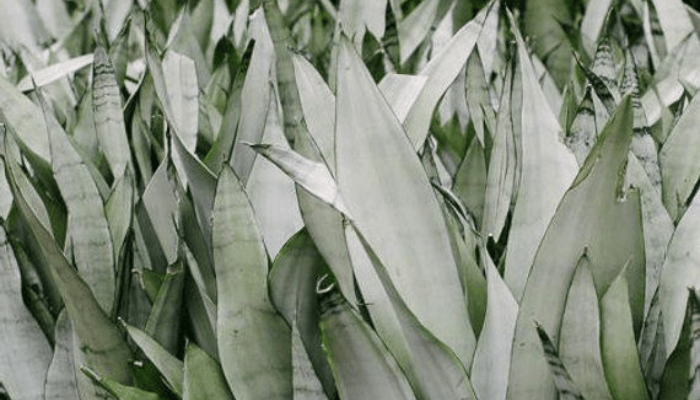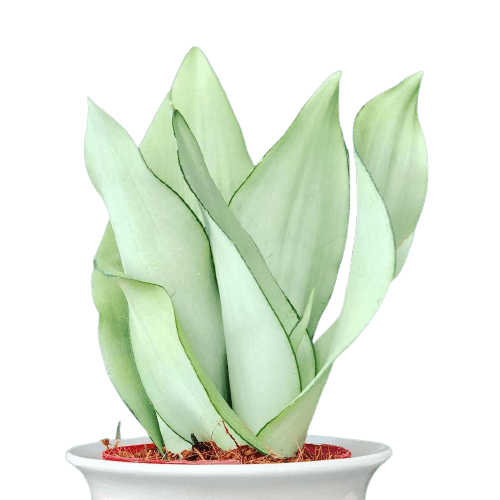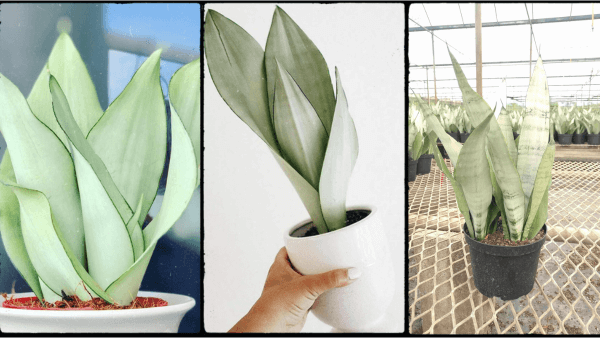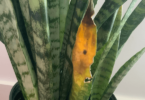The moonshine snake plant, a stunning variety of the Sansevieria family, is a unique addition to any indoor plant collection. Renowned for its silvery-green leaves and low-maintenance care requirements, this plant is a versatile piece that adds elegance and freshness to any space. This guide aims to equip you with an understanding of the specific needs and unique features of the Moonshine Snake Plant, preparing you for a successful plant-parenting journey.

The Moonshine Snake Plant: Spotlight on Distinct Features
The moonshine snake plant, or Sansevieria trifasciata ‘Moonshine’, is characterized by its strikingly pale, silvery-green leaves. Unlike its darker-hued relatives, the Moonshine variety presents a luminous, almost ethereal appearance. Its tall, rigid, sword-like leaves stand upright, creating a bold, architectural silhouette that enhances any interior decor style.
The Science of Snake Plant Care

Light Requirements: The Moonshine Snake Plant thrives in bright, indirect light. It can tolerate lower light levels, but its stunning pale coloration may darken in insufficient lighting. A north or east-facing window is ideal. Yellowing or browning leaf tips may indicate exposure to direct sunlight, which should be avoided.
Watering Practices: As a succulent, the Moonshine Snake Plant stores water in its leaves and prefers to dry out between waterings. The ‘soak and dry’ method works well – water the plant thoroughly and then allow the top inch of soil to dry out before watering again. Overwatering can lead to root rot, evident by a mushy base or yellowing leaves.
Soil and Fertilization: A well-draining potting mix, such as a cactus or succulent mix, is essential to prevent water-logging. During the growing season (spring and summer), a balanced houseplant fertilizer can be applied monthly. Avoid over-fertilizing as this can cause leaf burn.
Pruning and Maintenance: Pruning is an essential aspect of maintaining the plant’s health and appearance. Regularly remove dead or yellowing leaves at the base to encourage new growth and prevent disease spread.
Troubleshooting Common Issues
Pests and Diseases: The Moonshine Snake Plant can occasionally be affected by pests such as spider mites and mealybugs. These can be treated using a mild insecticidal soap or neem oil. Overwatering can lead to root rot, a common issue. If caught early, it can be remedied by reducing watering and ensuring proper soil drainage.
Growth Issues: If your plant is not growing as expected, reassess its care conditions. Inadequate light can lead to leggy growth, while overwatering often results in yellowing leaves.
Propagation of Moonshine
The Moonshine Snake Plant can be propagated by division or leaf cuttings. During repotting, rhizomes can be separated and planted individually. Leaf cuttings should be taken with a clean, sharp tool and allowed to callus over for a few days before planting in well-draining soil.
Curiosity About Snake Plants
The Moonshine Snake Plant is not just a decorative piece; it’s also known for its air-purifying abilities. According to NASA’s Clean Air Study, snake plants can filter indoor air pollutants, including benzene, formaldehyde, and trichloroethylene. Its nighttime oxygen production makes it an excellent choice for bedrooms.

The snake plant is a remarkable addition to any indoor plant collection, combining visual appeal with ease of care. By understanding its specific needs – from light requirements to watering schedule, from soil preference to common issues – you can help your snake plant thrive. So whether you’re just starting your plant-parenting journey or looking to expand your green family, the moonshine snake plant offers a unique, hardy, and rewarding experience.



